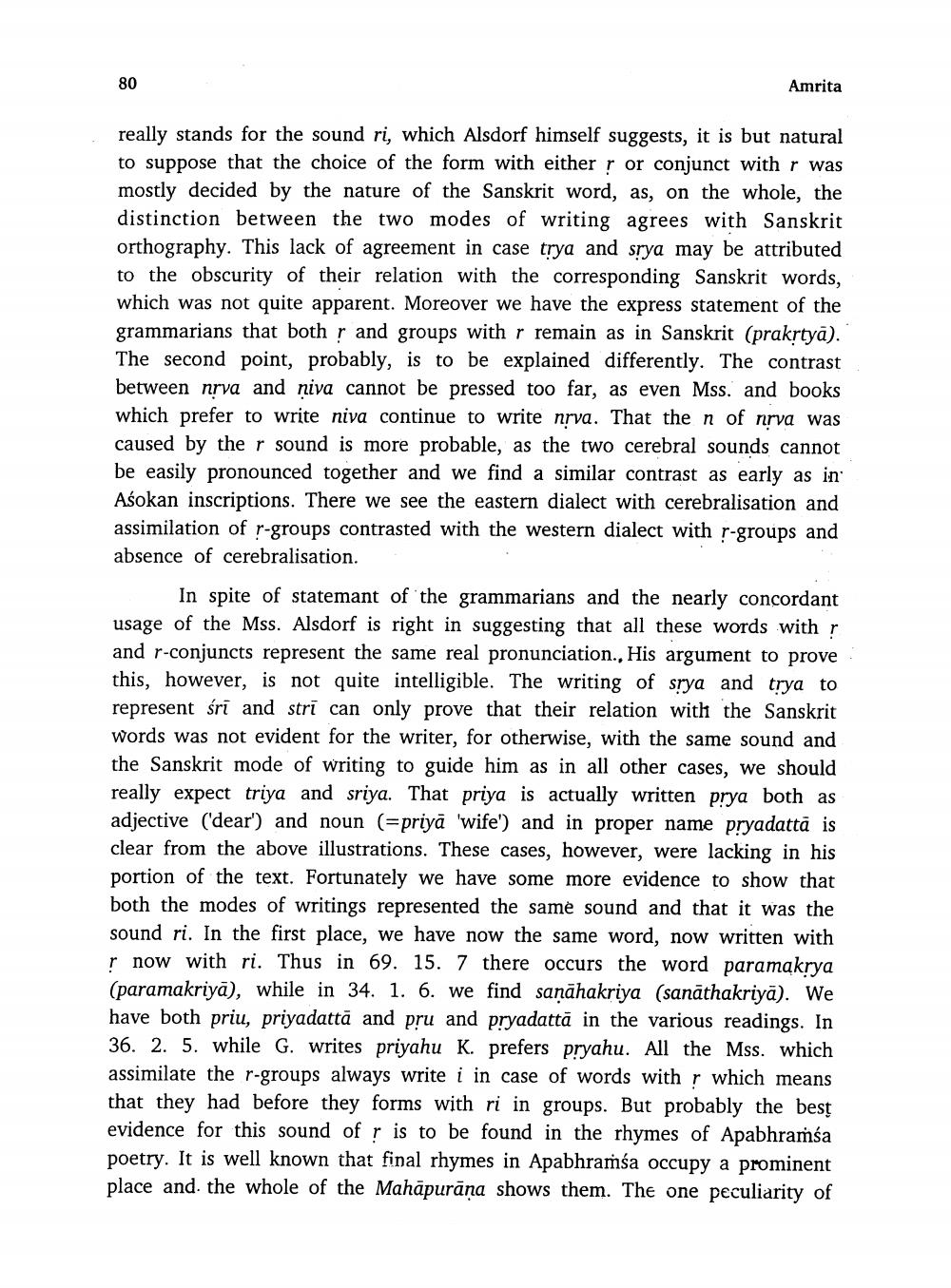________________
80
Amrita
really stands for the sound ri, which Alsdorf himself suggests, it is but natural to suppose that the choice of the form with either ? or conjunct with r was mostly decided by the nature of the Sanskrit word, as, on the whole, the distinction between the two modes of writing agrees with Sanskrit orthography. This lack of agreement in case trya and soya may be attributed to the obscurity of their relation with the corresponding Sanskrit words, which was not quite apparent. Moreover we have the express statement of the grammarians that both r and groups with r remain as in Sanskrit (prakrtyā). The second point, probably, is to be explained differently. The contrast between nrva and niva cannot be pressed too far, as even Mss. and books which prefer to write niva continue to write nrva. That the n of nova was caused by the r sound is more probable, as the two cerebral sounds cannot be easily pronounced together and we find a similar contrast as early as in Asokan inscriptions. There we see the eastern dialect with cerebralisation and assimilation of r-groups contrasted with the western dialect with r-groups and absence of cerebralisation.
In spite of statemant of the grammarians and the nearly concordant usage of the Mss. Alsdorf is right in suggesting that all these words with r and r-conjuncts represent the same real pronunciation., His argument to prove this, however, is not quite intelligible. The writing of srya and trya to represent śrī and strī can only prove that their relation with the Sanskrit words was not evident for the writer, for otherwise, with the same sound and the Sanskrit mode of writing to guide him as in all other cases, we should really expect triya and sriya. That priya is actually written prya both as adjective ('dear') and noun (=priyā 'wife') and in proper name pryadattā is clear from the above illustrations. These cases, however, were lacking in his portion of the text. Fortunately we have some more evidence to show that both the modes of writings represented the same sound and that it was the sound ri. In the first place, we have now the same word, now written with r now with ri. Thus in 69. 15. 7 there occurs the word paramakrya (paramakriyā), while in 34. 1. 6. we find sanāhakriya (sanāthakriyā). We have both priu, priyadattā and pru and pryadattā in the various readings. In 36. 2. 5. while G. writes priyahu K. prefers pryahu. All the Mss. which assimilate the r-groups always write i in case of words with r which means that they had before they forms with ri in groups. But probably the best evidence for this sound of r is to be found in the rhymes of Apabhraíśa poetry. It is well known that final rhymes in Apabhramśa occupy a prominent place and the whole of the Mahāpurāna shows them. The one peculiarity of




